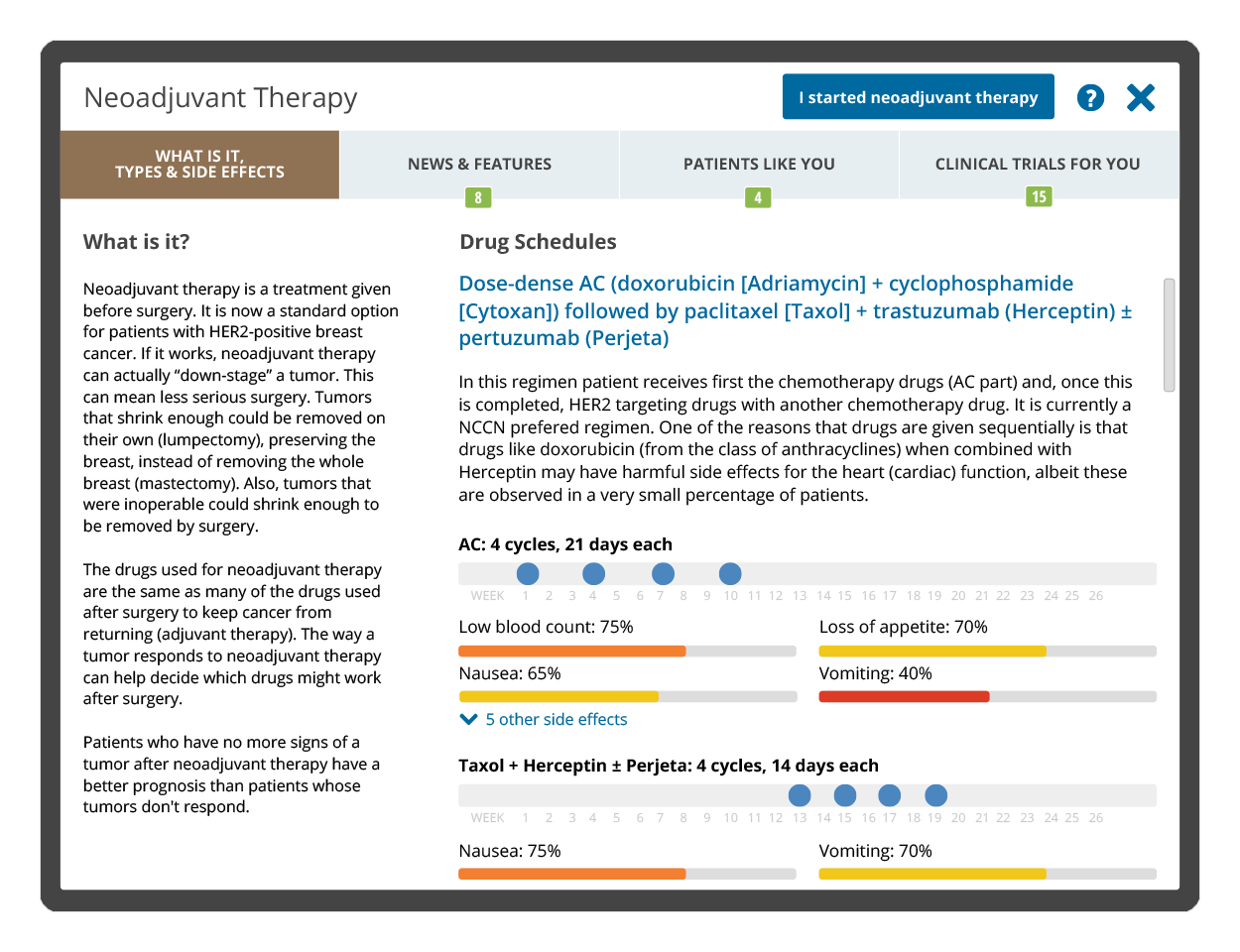2014 – 2016
Designing a Google Maps-like app for cancer patients to navigate a complicated landscape of treatment options, empowering them to actively participate in their care plan decisions.
User research
Product strategy
Information design
UI/UX design
User testing
Brand design
Marketing design
Fundraising
Problem
Newly diagnosed cancer patients are suddenly faced with making difficult decisions about their future while beset by all kinds of emotions. Esoteric language compounds indecision, often with precious little time to waste. Getting up to speed as quickly as possible statistically leads to better outcomes for patients. The more engaged they are, the better they do.
Solution
Explain treatment options with visuals instead of words, using a metaphor people already understand: a map. The various treatment options are displayed intuitively as routes, allowing patients to see the road ahead and to confidently choose the best one for them. They can drill down into each step for more details, see how other patients have done, or read the latest news.
Summary
Initial prototypes were able to raise funding and support to design, test, and build a proof of concept MVP for one cancer type. We interviewed cancer survivors, their families, patient advocates, and healthcare providers to understand and prioritize the challenges for newly diagnosed patients. IDEO’s digital health team helped us establish a design thinking process for CancerMaps and coached us through the first few steps.
Patient workshop identifying their major challenges.
Initial prototypes that led to inspiration for the final map concept.
Whiteboarding the final design.
Several rounds of user tests were performed with patients at various stages of their cancer treatment. The map metaphor evolved from these tests, initially conceived as flow diagrams, infographics, a topographical map, and then finally a transit map UI used in the MVP. Tablets were identified early on as the ideal form factor.
Below is an overview of the CancerMaps MVP for breast cancer, showing the map for a newly diagnosed stage III patient.
The map starts at the left with the patient’s diagnosis. Each treatment path ends with a “Follow-up” node at the right. The goal is for the patient’s journey to end at this node with a “NED” result – No evidence of disease. Each node, or “stop”, represents a treatment option, color coordinated by type (chemo, radiation, surgery, etc). Tapping a node opens a screen to learn more about that option.
Drilling down on any treatment node provides information most requested by patients and their families in our workshop sessions:
- Description of the treatment options and their side effects
- Recent news & features related to this step
- Experiences from similar patients
- Nearby clinical trials
The patient’s case report can be filled out by the patient or ideally is connected to their EMR and auto-populated. Their case can also be updated with the patient’s personal story and quality of life considerations in their own words. We were concurrently developing a natural language processor with machine learning to structure such patient-reported data to build accurate cases and improve the relevancy of the information we showed on their map.
Results
The plan was to have the MVP lead to more funding and/or partnerships to seed the map with patient data as well as more cancer types over time. Despite positive feedback from patients, ultimately we couldn’t find institutions willing to share their data. It became clear that this was going to be an insurmountable problem, so we pivoted to a personalized Q&A service for patients who in turn consented to sharing their data with us to build our own repository of cases. Ask Cancer Commons (version 1 pictured here) is still going strong today and has helped over 10,000 patients.















